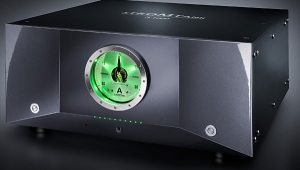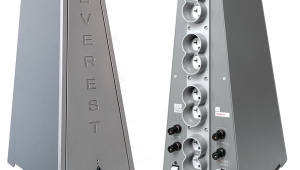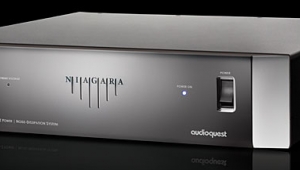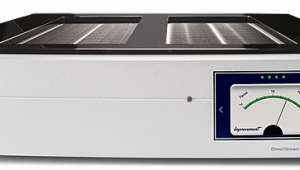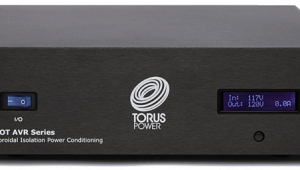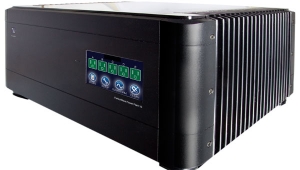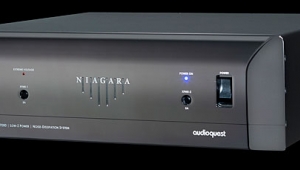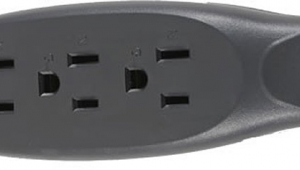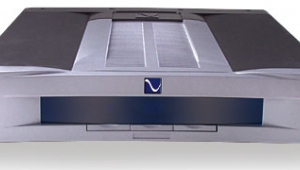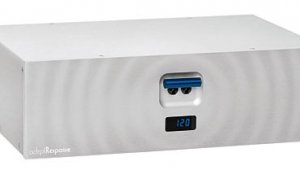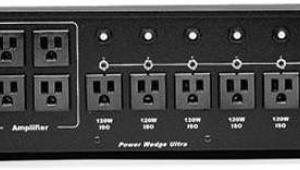| Columns Retired Columns & Blogs |
Shunyata Research AC power products
Power-line conditioning and exotic power cords, once considered the lunatic fringe of tweaking, have become normal parts of audiophile life. Over the last several years Shunyata Research, founded by former NSA research scientist Caelin Gabriel, has established itself as a leading innovator in the area. The company's latest efforts include the Hydra Model 8 power-distribution center ($1995), for use with whole systems or front ends; the two-outlet "mini" Hydra Model 2 ($395), intended for use with power amplifiers; and the Anaconda Alpha and Anaconda vX power cords ($1995), the new top models in the PowerSnakes line.
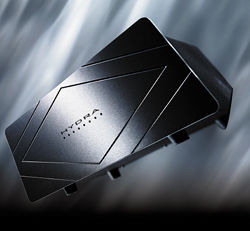 A number of months back, Shunyata's Grant Samuelsen sent me the Hydra 8 and enough of both types of Anacondas to outfit my entire system. The Hydra 8 is an entirely passive device that carries eight cryogenically treated, silver Shunyata Venom outlets—two are digital-specific and two are analog-specific—on the rear panel of its hermetically sealed box-within-a-box aluminum case. The space between the boxes is filled with "Fe-Si-1002 noise reduction compound," a "synthetically manufactured ceramic material that is similar in appearance to crystalline beads." Though Fe-Si-1002 is nonmetallic, Gabriel asserts that "it has a similar effect as ferrites in that it absorbs electromagnetic noise within its molecular structure." This wonder stuff is also claimed to absorb noise coming in through the wall outlet and the noise generated by the components plugged into the Hydra. The Hydra 8 is designed to operate at or near its capacity of 2400W continuously while generating no heat.
A number of months back, Shunyata's Grant Samuelsen sent me the Hydra 8 and enough of both types of Anacondas to outfit my entire system. The Hydra 8 is an entirely passive device that carries eight cryogenically treated, silver Shunyata Venom outlets—two are digital-specific and two are analog-specific—on the rear panel of its hermetically sealed box-within-a-box aluminum case. The space between the boxes is filled with "Fe-Si-1002 noise reduction compound," a "synthetically manufactured ceramic material that is similar in appearance to crystalline beads." Though Fe-Si-1002 is nonmetallic, Gabriel asserts that "it has a similar effect as ferrites in that it absorbs electromagnetic noise within its molecular structure." This wonder stuff is also claimed to absorb noise coming in through the wall outlet and the noise generated by the components plugged into the Hydra. The Hydra 8 is designed to operate at or near its capacity of 2400W continuously while generating no heat.
The Hydra's three-stage Trident Defense System begins with Shunyata's proprietary Venom filter—a four-element capacitive array that can absorb voltage spikes of more than 1000V as well as noise. The second line of protection is a six-element array of TMOVs that provide 6000V of overvoltage protection and up to 60,000 amps of peak current protection. Last is a Carling electromagnetic circuit breaker that "allows unimpeded current flow." This uses a separate current-sensing circuit—one outside the current path—and will trip in the event of overcurrents exceeding 20 amperes. The bus bars in the Hydra are machined from "the finest cryogenic-grade CDA-101 copper" and are more than 5" long and 1.5" thick. The Hydras contain no chokes, filters, or coils.
The Anaconda cables, despite their huge size, are lightweight and easy to dress, unlike most cables of similar girth. The Alpha (45 amp capacity, 7 gauge total weight) and vX (35 amp capacity, 9 gauge total weight) use the same cryogenically treated CDA-101 copper, a patented winding geometry, and hand-braided conductors. The vX, intended for use with digital and visual electronics and recording equipment, fills the jacket with Fe-Si-1002 beads, which shift when the cable is handled; a snakelike hiss is the result. PowerSnakes, indeed. Shunyata has plenty of documentation to back up their claims; it can be accessed at the Shunyata website.
The effects of the Shunyata components will not be subtle in any good system. The Hydra 8 plus Anacondas setup brought consistently quieter backgrounds and intertransient silences, and a more relaxed and organized presentation with all of the components I tried with them. The consistency of the effect was especially impressive. Fine layers of haze and noise vaporized with the Shunyatas feeding my components. The power amplifiers stood alone in not being conditioned by a Hydra, but there was no question that, with the Anacondas, dynamics and detail resolution were appreciably better than with my other reference cables. By themselves, the Anacondas did have a slight timbral signature. Their top octave was, if not shelved down, slightly mellower than with the Acoustic Zen Gargantua 2 or the Siltech SPX-30 Classic.
Strangely, that signature largely vanished when a pair of Hydra 2s showed up at my door, each accompanied by a 20A vX and an Alpha: vX from wall to Hydra 2, Alpha from Hydra 2 to amplifier. Results were consistent with both the McIntosh MC501s and the Edge NL-12—the Hydra 2s eliminated haze, improved clarity, and allowed music to sound more of a piece.
Shunyata's success in the professional audio field is a particularly impressive testimony to the efficacy of their products. Music-industry pros such as Doug Sax, James Guthrie, Peter McGrath, David Gilmour, and Rick Rubin have no time or money to waste on voodoo devices that don't deliver what they promise, and all of them use Hydras and PowerSnakes. One also sees Hydras and PowerSnakes in the rooms of many leading manufacturers at audio shows.
The Shunyata Hydras and Anacondas are the real deal—they do exactly what Gabriel claims for them. Adding them to an already high-performance system may well prove to be a more cost-effective sonic upgrade than replacing components.—Paul Bolin
- Log in or register to post comments
